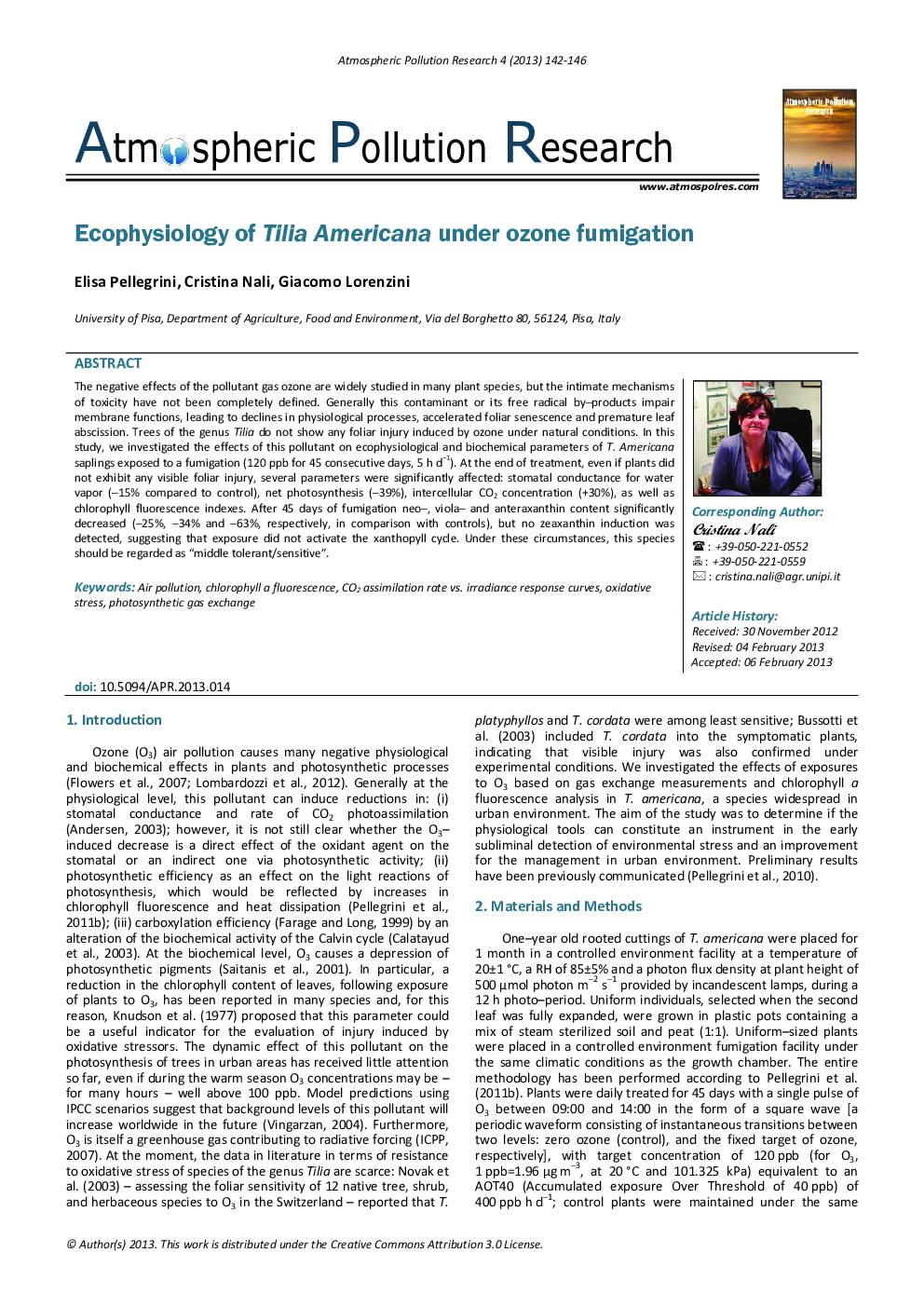| Article ID | Journal | Published Year | Pages | File Type |
|---|---|---|---|---|
| 4434629 | Atmospheric Pollution Research | 2013 | 5 Pages |
The negative effects of the pollutant gas ozone are widely studied in many plant species, but the intimate mechanisms of toxicity have not been completely defined. Generally this contaminant or its free radical by–products impair membrane functions, leading to declines in physiological processes, accelerated foliar senescence and premature leaf abscission. Trees of the genus Tilia do not show any foliar injury induced by ozone under natural conditions. In this study, we investigated the effects of this pollutant on ecophysiological and biochemical parameters of T. Americana saplings exposed to a fumigation (120 ppb for 45 consecutive days, 5 h d–1). At the end of treatment, even if plants did not exhibit any visible foliar injury, several parameters were significantly affected: stomatal conductance for water vapor (–15% compared to control), net photosynthesis (–39%), intercellular CO2 concentration (+30%), as well as chlorophyll fluorescence indexes. After 45 days of fumigation neo–, viola– and anteraxanthin content significantly decreased (–25%, –34% and –63%, respectively, in comparison with controls), but no zeaxanthin induction was detected, suggesting that exposure did not activate the xanthopyll cycle. Under these circumstances, this species should be regarded as “middle tolerant/sensitive”.
